Teenage volunteers have unearthed a trove of early Islamic, 24-carat-gold coins during an excavation near the city of Yavne in Israel’s central district.
Dating back to the Abbasid period around 1,100 years ago, the collection of 425 coins is an ‘extremely rare’ find, Israel Antiquities Authorities experts said.
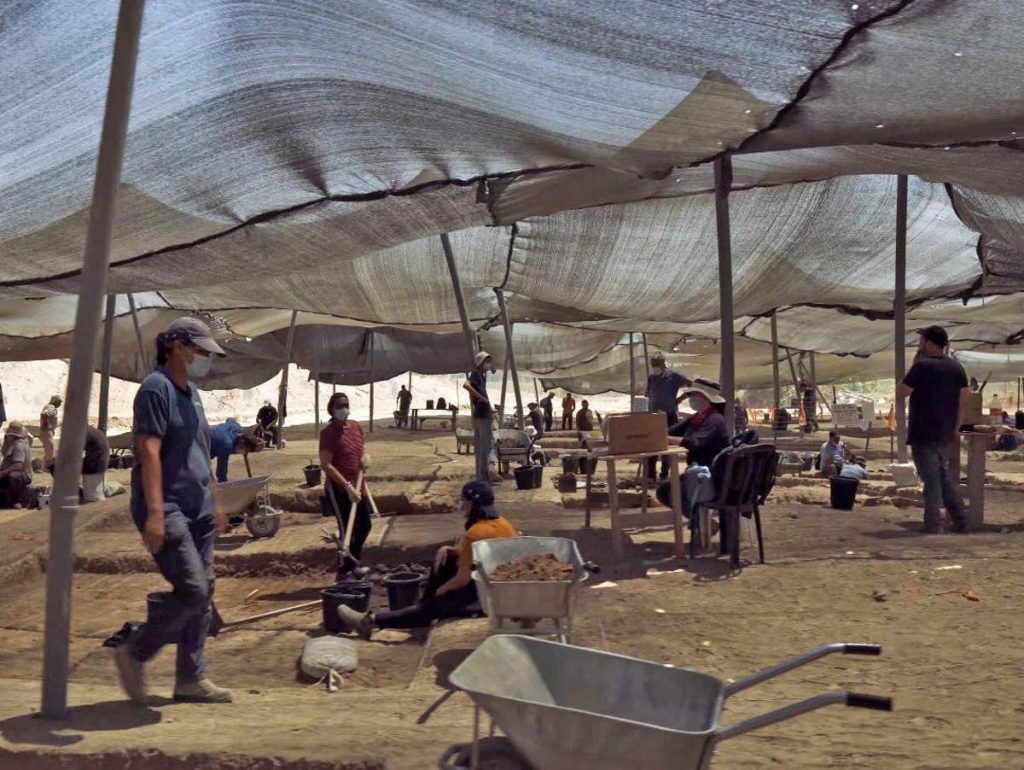
The trove also included hundreds of smaller clippings, made from other gold coins, that would have served as smaller denominations of currency.
Stashed away within a clay vessel, the coins were discovered at the site — which is to be built into a new neighbourhood — on August 18, 2020.
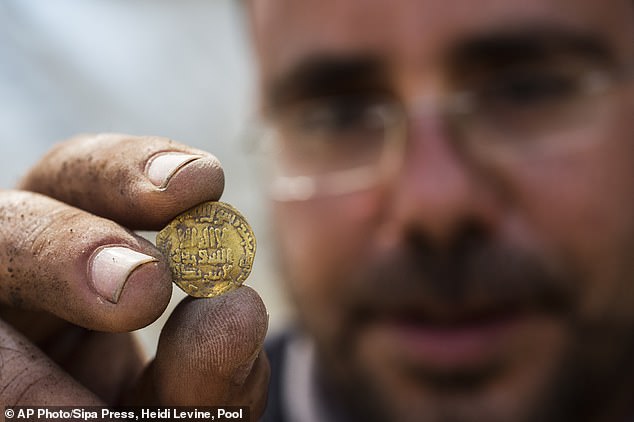
Teenage volunteers have unearthed a trove of early Islamic, 24-carat-gold coins during an excavation near the city of Yavne in Israel’s central district. Pictured, Israeli archaeologist Shahar Krispin displays one of the 425 gold coins that were discovered at the site
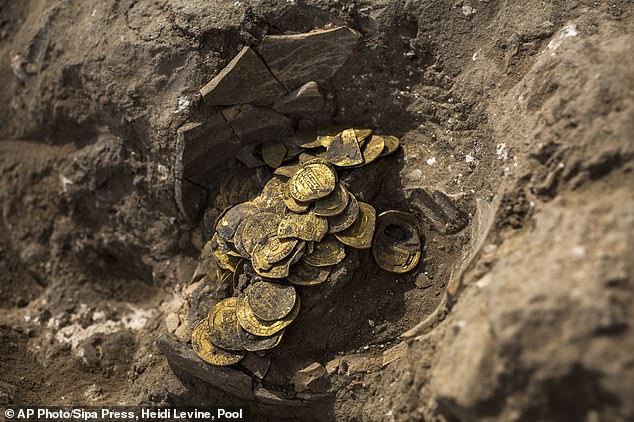
Dating back to the Abbasid period of around 1,100 years ago, the collection of 425 coins, some of which are pictured, is an ‘extremely rare’ find, Israel Antiquities Authorities experts said
‘The person who buried this treasure 1,100 years ago must have expected to retrieve it and even secured the vessel with a nail so that it would not move,’ said excavation director Liat Nadav-Ziv.
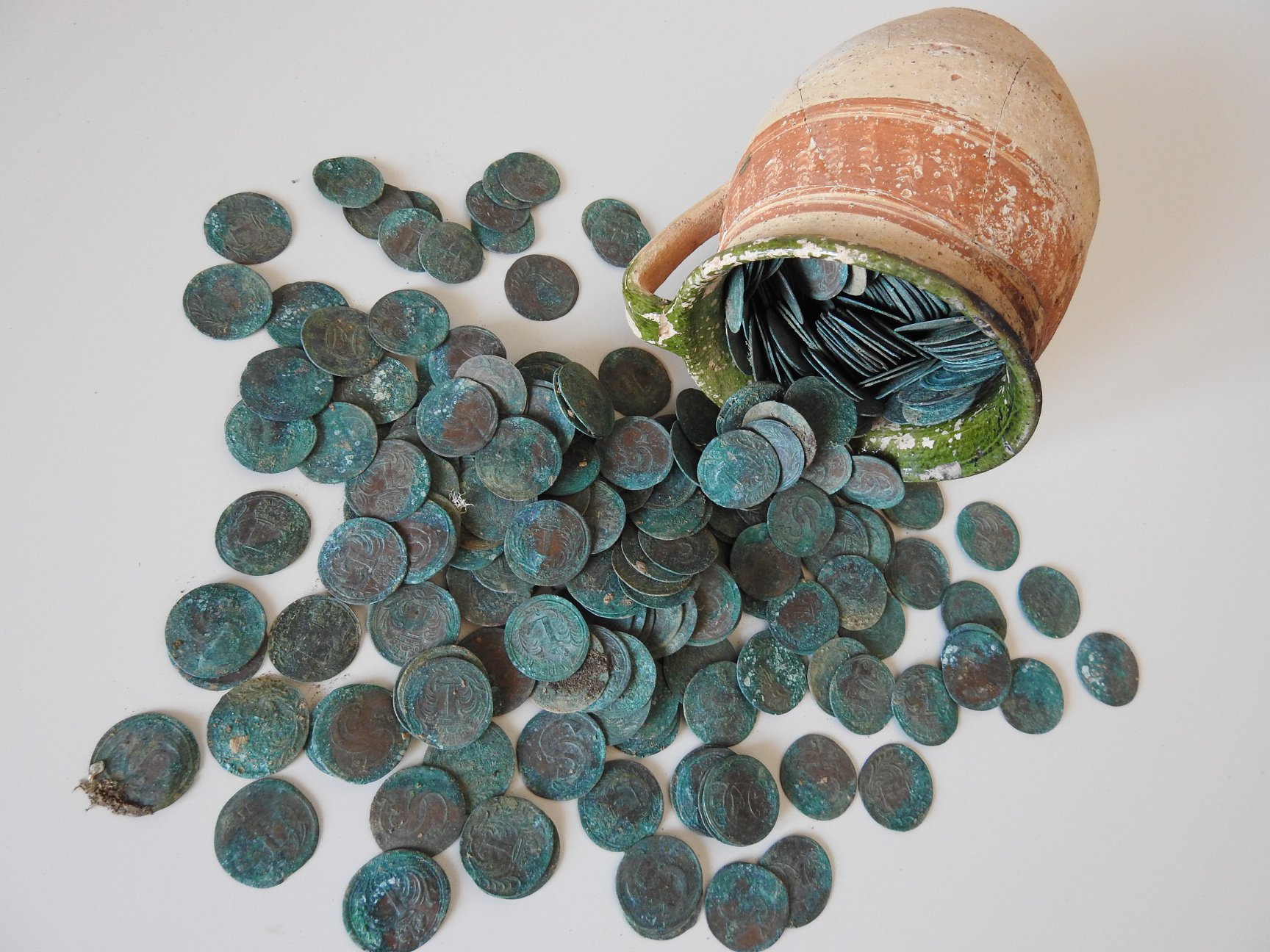
‘We can only guess what prevented him from returning to collect this treasure.’
The treasure trove was hidden by its mysterious owner in an area that, during the Abbasid period, is understood to have been populated by workshops.
‘It was amazing,’ Oz Cohen, one of the young volunteers who unearthed the long-forgotten treasure, told Reuters.
‘I dug in the ground and when I excavated the soil, saw what looked like very thin leaves. When I looked again I saw these were gold coins.’
‘It was really exciting to find such a special and ancient treasure.’

The trove, some of which is pictured, also included hundreds of smaller clippings, made from other gold coins, that would have served as smaller denominations of currency
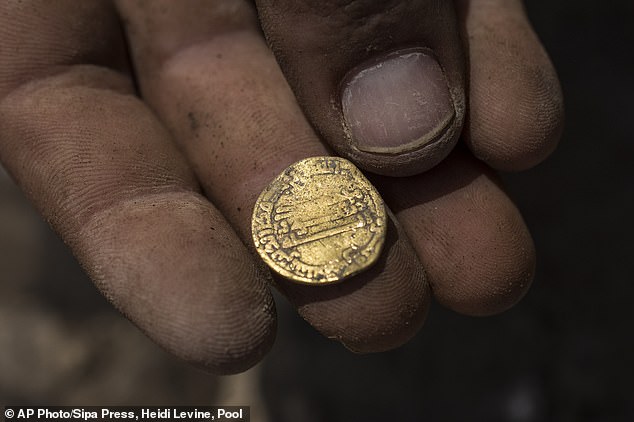
The coins date back to the late 9th century, at the height of the Abbasid Caliphate that once controlled the lion’s share of the Near East and North Africa, explained Antiquities Authority numismatist Robert Kool. Pictured, one of the coins

Stashed away within a clay vessel, the coins were discovered at the site, pictured — which is to be built into a new neighbourhood — on August 18, 2020
The coins date back to the late 9th century, at the height of the Abbasid Caliphate that once controlled the lion’s share of the Near East and North Africa, explained Antiquities Authority numismatist Robert Kool.
At the time they were stashed, the coins would have been worth a significant amount of money, Mr Kool continued.
‘For example, with such a sum, a person could buy a luxurious house in one of the best neighbourhoods in Fustat, the enormous wealthy capital of Egypt,’ he added.
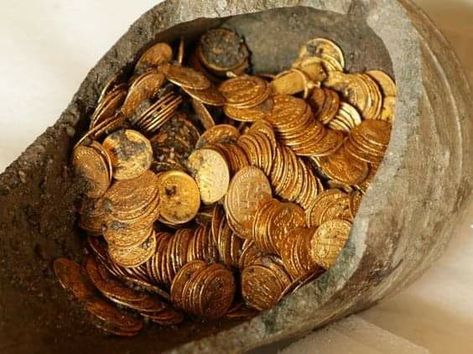
‘Hopefully the study of the hoard will tell us more about a period of which we still know very little.’
The Yavne discovery represents one of the largest collections of ancient coins ever found within Israel.
In 2015, amateur divers found around 2,000 gold coins — dating back to the 10th–11th century Fatimid period — off the coast of the ancient port city of Caesarea.
Teenage volunteers have unearthed a trove of early Islamic, 24-carat-gold coins during an excavation near the city of Yavne in Israel’s central district

At the time they were stashed, the coins would have been worth a significant amount of money, explained Antiquities Authority numismatist Robert Kool. Pictured, Israeli archaeologist Shahar Krispin counts some of the gold coins
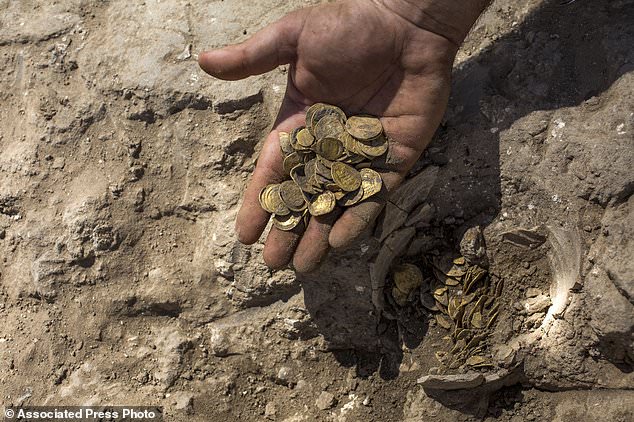
The Yavne discovery, pictured, represents one of the largest collections of ancient coins ever found within Israel. In 2015, amateur divers found around 2,000 gold coins — dating back to the 10th–11th century Fatimid period — off the coast of the ancient port city of Caesarea





